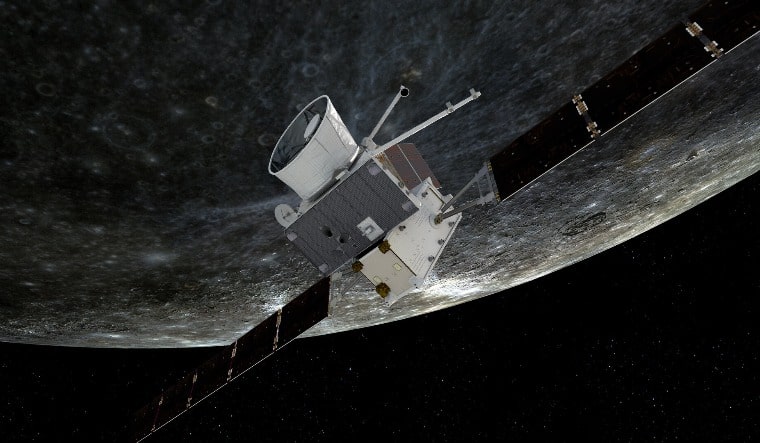The Euro-Japanese space probe, BepiColombo, made its first flyby of the planet Mercury at 5.04am IST, coming as close as 200km to its surface before going back into deep space.
“BepiColombo is now as close to Mercury as it will get in this first of six Mercury flybys,” the European Space Agency (ESA) said on Twitter.
The mission, a collaboration between the ESA and the Japanese space agency (JAXA), is a seven-year one that was launched in 2018 to study Mercury.
BepiColombo will eventually enter Mercury’s orbit in 2025. The six flybys in the meantime will slow the probe enough to drop into the orbit, and will also take pictures of the surface to send back to earth.
During the first flyby, the spacecraft’s two monitoring cameras took pictures of the planet’s northern and southern hemispheres. BepiColombo is unable to use its high-definition camera at the moment as it is obstructed by the two probes that will begin orbiting Mercury in 2025.
The spacecraft is actually a two-in-one mission—the ESA-built Mercury Planetary Orbiter and JAXA’s Mercury Magnetospheric Orbiter. Both orbiters will detach from the Mercury Transfer Module in 2025 and circle the planet for a year.
The orbiters will collect data from the planet directly for the first-time ever that will help scientists understand the surface and magnetic field of the small planet closest to the sun.
Hello, Mercury!
— Bepi (@ESA_Bepi) October 2, 2021
This splendid view of part of Mercury's northern hemisphere was captured by @ESA_MTM about 10 mins after #MercuryFlyby close approach, from a distance of 2420km. https://t.co/jjGKrsQXDH#ExploreFarther pic.twitter.com/EMhMJ5tKiN
Mercury has always been a difficult planet to study because of its proximity to the sun.
From the current flyby, ESA and JAXA are expecting pictures of Mercury’s large craters, with the European body promising to release a short movie on Monday with the visuals it will have received this time.
They are also hoping to collect some data about Mercury’s magnetic field, plasma and particles, this time.
The first flyby also happens to coincide with the 101st birth anniversary of Italian scientist Giuseppe Bepi Colombo, after whom the mission is named. Colombo’s study of the planet had helped scientists understand a lot about Mercury, and eventually facilitated this mission.
The next passes are expected in June 2023, September 2024, December 2024 and January 2025. From there, the regular orbit would begin and the all the major research work would commence in 2026.




